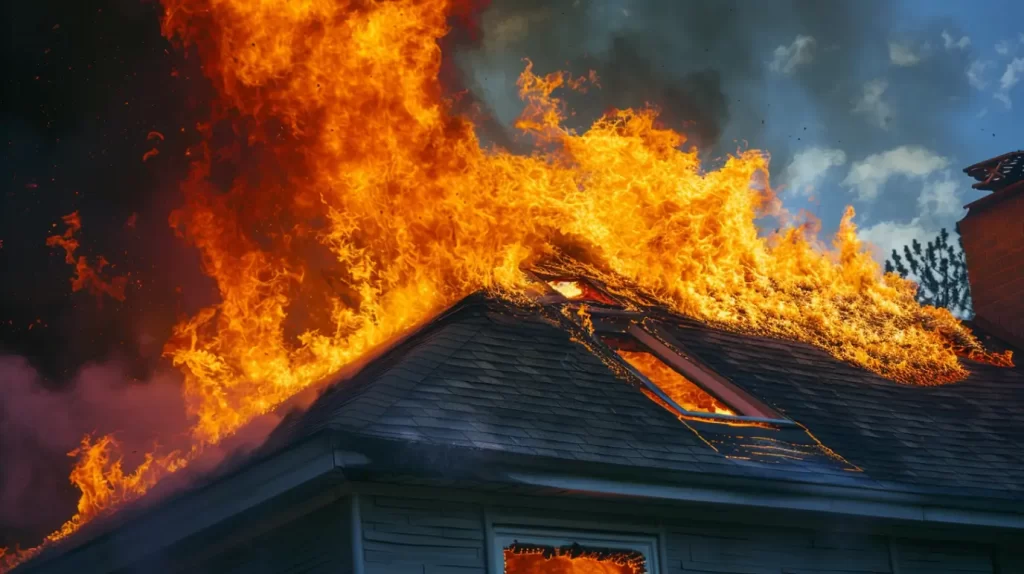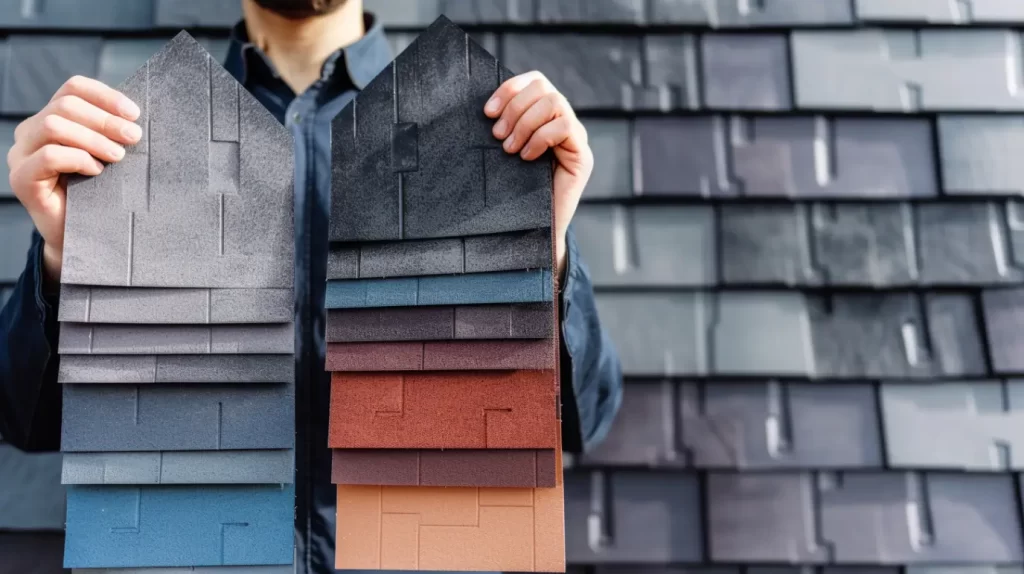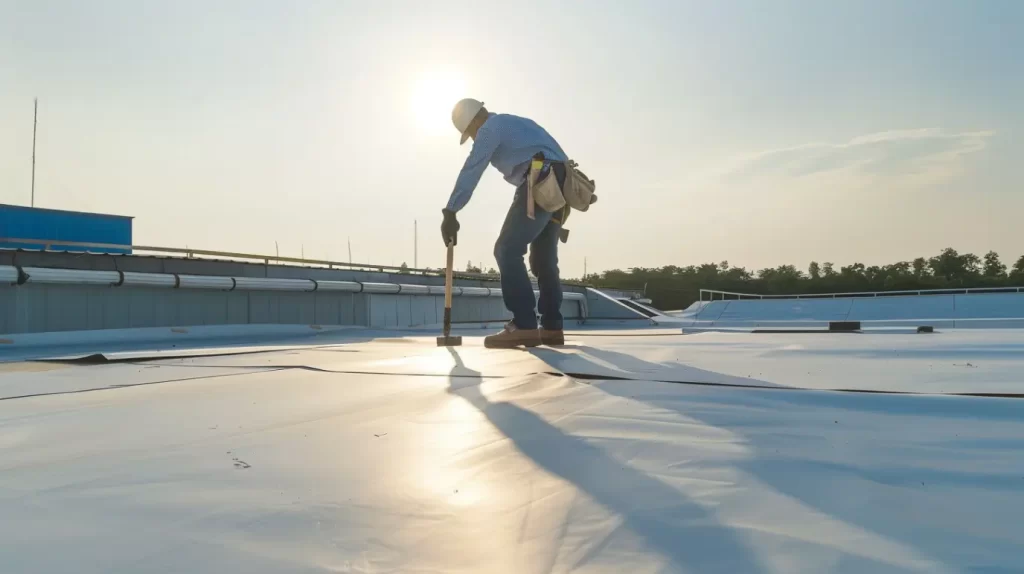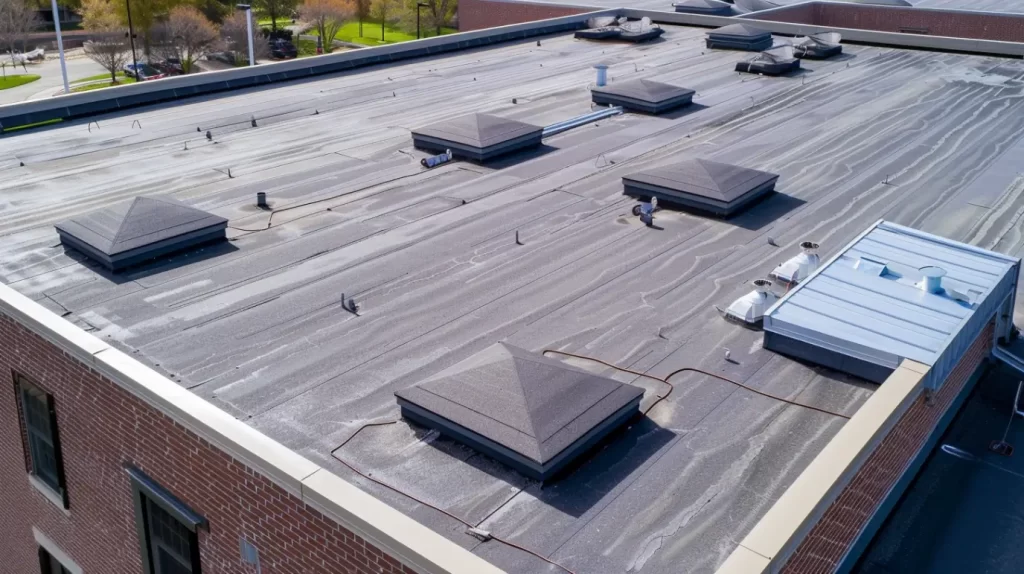Protecting your business in Anaheim, CA, starts with having a roof that offers fire resistance and follows building codes. Fontaine Roofing knows the right roofing materials and good installation are key to keeping your place safe and staying up to code. Our team works hard to keep out fire hazards and avoid problems that cost you money. We help many property managers and HOAs in Southern California. Every roofing project we do meets the newest fire safety standards, giving your property good protection.
The Importance of Fire Code Compliance in Commercial Roofing
Fire safety in commercial buildings starts with the roofing system. In Anaheim, CA, compliance with relevant building codes is vital for protecting your property and investment. Adhering to these codes ensures roofs can withstand fire risks, minimizing potential costs and liabilities.
Building owners should consult certified roofing contractors to ensure their roofs meet fire codes and safety standards. Partnering with companies like Fontaine Roofing guarantees compliance with local and state regulations, preparing properties against fire risks while avoiding costly repairs.
Contact Us
Why Compliance Matters for Anaheim, CA Property Managers and HOAs
For property managers and HOAs in Anaheim, CA, fire resistance and code compliance are essential for safety and asset protection. Neglecting these factors can lead to higher insurance premiums or policy cancellations. Local roofing contractors ensure adherence to safety standards and proper materials.
Insurers often favor fire-resistant roofing, offering lower rates due to reduced risk. Compliance with codes not only provides peace of mind but also shows your commitment to safety.
Common Consequences of Non-Compliance
Neglecting fire code compliance poses significant risks for property managers and homeowners associations (HOAs) in Anaheim, CA. Non-compliance increases liability exposure, leading to potential lawsuits and higher insurance premiums or denied claims related to fire damage, jeopardizing financial stability.
Additionally, disregarding building codes can compromise the structural integrity of commercial properties, risking damage or catastrophic failures during extreme weather. Failure to meet performance standards may also cause project delays in roof replacements or renovations, eroding trust among stakeholders. Proper compliance safeguards buildings and preserves the value and longevity of your roof.

Key Fire Code Requirements for Roofing Design
Fire code requirements are essential for safe roof systems. In Anaheim, CA, building codes outline fire resistance, material selection, and installation methods for commercial buildings, ensuring they meet the minimum standards for safety. Understanding these requirements ensures compliance and enhances safety.
For commercial projects, focus on material selection, proper installation, and maintaining records that demonstrate adherence to codes. Let’s explore the building codes and fire rating systems that guide commercial roofing design in California.
Overview of U.S. and California Codes Affecting Roofs
Navigating roofing design requires understanding various codes and specific requirements. In the U.S., the International Building Code (IBC) sets essential standards for fire safety, structural integrity, and wind resistance. California enhances these with specific building codes to address its unique climate challenges, such as high winds and fire risks.
Local codes further refine these guidelines, ensuring properties meet specific safety and longevity requirements. Compliance not only follows the law but also extends your roof’s lifespan and optimizes system performance by minimizing environmental impact. It reduces hazards like drainage issues and moisture buildup, providing peace of mind for property managers and owners.
Material Classes and Fire Ratings Explained
Understanding material classes and fire ratings is crucial for roofing design compliance. Roofing materials are rated by ignition resistance and flame spread control to slow the spread of flames effectively. Class A materials, such as asphalt shingles and metal roofs, offer the highest fire resistance, while Classes B and C provide moderate to low protection, making them less suitable for commercial buildings.
Selecting the right materials not only enhances roof longevity but also ensures compliance with local codes. Regular maintenance, along with proper installation and adherence to performance standards, are vital for fire safety. Property managers should prioritize high-rated materials to minimize fire hazards and protect their investments.

Fire-Rated Roofing Materials and Their Impact
Choosing fire-rated roofing materials is crucial for building safety in Anaheim, CA. Options like asphalt shingles, metal panels, and single-ply membranes offer varying fire ratings and suit both flat and sloped roofs.
Your choice impacts fire safety and may affect insurance costs. Selecting the right roofing and ensuring proper installation can reduce fire risks, benefiting property managers and HOAs. Understanding the pros and cons of each material simplifies finding the best roofing solution for your property.
Evaluating Options: Asphalt Shingles, Metal, Single-Ply, and More
Various roofing materials offer unique advantages to meet different needs, including different roofing materials for specific applications. Asphalt shingles are cost-effective and easy to install, providing reliable weather resistance with diverse aesthetics. Metal roofing is known for its durability and superior wind resistance, making it ideal for harsh conditions.
For flat roofing systems, single-ply membranes excel in waterproofing and energy efficiency, potentially lowering insurance premiums by reducing water damage risk. The choice of material impacts roof longevity and fire safety compliance with local codes. Each option requires careful evaluation of installation methods and performance standards by property managers and building owners.
How Fontaine Roofing’s Preferred Products Meet Fire Safety Standards
Fontaine Roofing collaborates with top manufacturers like GAF, CertainTeed, and Polyglass, utilizing their certified fire-resistant materials. As a GAF Master Elite Contractor and CertainTeed Shingle Master, we ensure expert installation backed by Fiber Tite and IB Roofing Systems.
With our commitment to quality, building owners can trust that their roofs—new or old—meet the highest fire safety standards for lasting peace of mind.

Installation Methods that Ensure Code Compliance
Reliable roofing systems begin with proper installation and material selection. Quality installation ensures commercial roofs in Anaheim, CA, have strong wind resistance, fire safety, and longevity. Good workmanship and safety measures significantly reduce the risk of fire or structural damage.
Fontaine Roofing employs certified installers and meticulously documents each step, ensuring compliance with building codes, safety standards, and fire safety guidelines for property managers and HOAs.
Next, we’ll explore the critical roles of underlayments and flashings in safety and installation.
The Role of Underlayments, Barriers, and Flashings
Underlayments, barriers, and flashings are crucial for enhancing combustion safety in roofing systems. These components help prevent flame spread and reduce the risk of blaze hazards, protecting vulnerable areas from thermal threats. High-quality underlayments offer moisture resistance, reducing risks of water damage and ignition.
Effective barriers, including fire-rated materials, ensure compliance with local building codes. Properly installed flashings create watertight seals at junctions, minimizing moisture buildup that can weaken structural integrity and support foot traffic. Together, these elements enhance roof longevity and safety, making them essential for any roofing project.
Importance of Quality Workmanship and Certified Installers
Quality workmanship by certified installers is crucial for fire-safe roofing systems. Contractors with credentials like GAF Master Elite or Polyglass Preferred Contractor understand proper installation methods and maintain clear records.
Hiring certified professionals offers property managers and HOAs peace of mind, ensuring roofs meet the highest standards. These installers adhere to best practices and document every project step, providing proof of compliance for insurers and city inspectors.
Fontaine Roofing emphasizes training and holds certifications such as TRI, CACM, CAI, and NRCA membership, ensuring every job is completed with care, durability, and transparency for property managers and HOAs.

The Role of Insulation and Fire Barriers in Roofing Systems
Insulation and fire barriers are crucial for roof safety against fire. Proper insulation enhances energy efficiency, fire resistance, and structural integrity. For commercial roofing in Anaheim, CA, selecting roofing materials with strong insulation and code-approved fire barriers is essential. This choice ensures improved flame resistance, energy efficiency, compliance with regulations, and longevity of the roof.
Selecting Insulation for Fire Resistance
When selecting insulation for commercial flat roofing, prioritize fire-resistant products like polyisocyanurate and mineral wool, which also enhance energy efficiency.
Fire-resistant insulation slows flame spread, providing crucial evacuation time and supporting first responders. It’s essential for code compliance, as local regulations often dictate acceptable insulation types. Building safety consultant Maria Nguyen emphasizes that proper insulation is key to passing fire code inspections.
Fontaine Roofing helps property managers and HOAs select the ideal insulation for their flat roofing projects, ensuring fire resistance, energy savings, and overall value.
Integrating Fire Barriers Without Compromising Performance
You don’t have to compromise performance when adding fire barriers to a commercial roofing system. The right barriers can enhance roof strength, meet strict standards, and ensure durability for the entire roof.
Fire barriers are typically installed beneath the main roofing layer or between insulation layers to prevent fire spread and comply with building codes. It’s essential to hire knowledgeable contractors who uphold energy efficiency and weather resistance.
Fontaine Roofing specializes in implementing safety measures correctly, prioritizing fire code compliance while delivering robust roofing systems for property managers and HOAs.

Documenting Compliance for Insurance and Legal Protection
Accurate records are essential for demonstrating code compliance to insurance companies and legal entities. Property managers and HOAs benefit from tracking their roofing projects at every stage, from product selection to final checks and certifications.
Working with trusted contractors like Fontaine Roofing ensures you receive the necessary paperwork and industry-accepted certifications, simplifying interactions with insurance companies and claims. This documentation also provides legal protection in case of any issues related to your roofing project.
Essential Paperwork Property Managers Should Request
Property managers ensure fire code compliance through meticulous documentation. Key paperwork includes roofing project permits, demonstrating adherence to local building codes. Requesting materials documentation is essential, as it reveals the fire resistance and durability of roofing materials—critical for safety standards.
Maintaining contracts with roofing contractors ensures proper installation methods. Routine maintenance logs show compliance with inspections and building codes. These documents not only uphold structural integrity but also meet insurance requirements, protecting against costly repairs or liabilities in case of a fire. Proper documentation provides peace of mind for property managers and building owners alike.
How Certifications Like GAF Master Elite Benefit Your Project
Hiring a certified roofing contractor, like a GAF Master Elite, greatly boosts your project’s success. These experts understand fire code compliance and ensure adherence to local building codes. Their knowledge of various materials and installation methods enhances structural integrity and reduces flame hazards.
Additionally, certified contractors often lead to lower insurance premiums, as insurers recognize the reduced risk of well-installed roofs. This certification provides peace of mind for property managers and HOAs while ensuring performance standards for fire resistance and roof longevity. Choosing certified services significantly mitigates potential fire safety issues.
Why Choose Us
Ensuring your roof meets fire codes is crucial for property managers and HOAs in Anaheim, CA. Adhering to fire safety regulations minimizes risks and safeguards your building. By understanding fire code requirements and selecting appropriate roofing materials, you significantly protect your investment. At Fontaine Roofing, we prioritize safety, using top-quality products from brands like GAF and CertainTeed. As a GAF Master Elite Contractor and Fiber Tite approved applicator, our team ensures meticulous execution of your roofing project. Don’t compromise on safety—contact us today to learn how your roofing system can comply with all fire safety standards.
Read our blog: Why Choosing Local Roofing Contractors Improves Efficiency
Frequently Asked Questions
How can I verify if my existing roof is fire code compliant?
To make sure the code compliance of your roof, book a check with certified roofing contractors such as Fontaine Roofing for expert roofing services. The experts look at the materials, installation methods, and all the needed papers. They find any potential issues and help you get peace of mind that your place meets fire resistance rules and safety standards.
When must class A, B, or C roof coverings be installed?
Class A coverings are required in high fire-risk areas and most commercial buildings, according to local building codes. While Classes B and C may be used in some instances, they offer less fire resistance. Material selection and installation must comply with building codes and safety standards.

